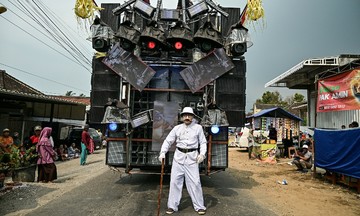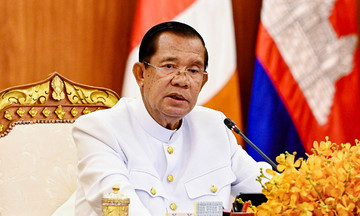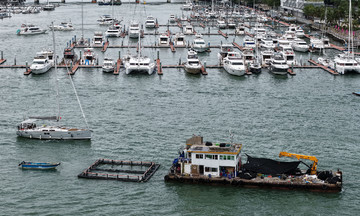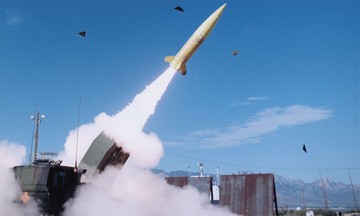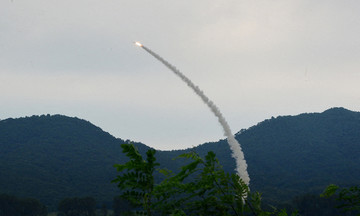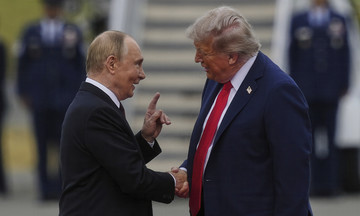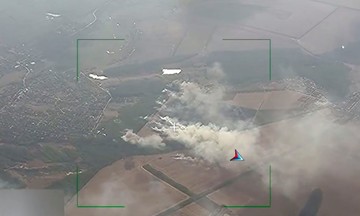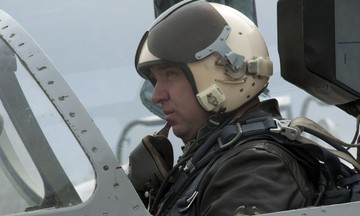As Magician piloted a robotic vehicle carrying a wounded soldier to safety, a plume of gray smoke suddenly appeared on his screen. The 27-year-old Ukrainian medic knew his rescue robot had hit a mine.
He believed the soldier he was transporting had died in the explosion. "I was heartbroken, thinking the mission had failed and my comrade was gone," Magician recounted on 13/8.
 |
A soldier from the 5th Ukrainian Brigade demonstrates how to operate a robot to transport wounded soldiers on a training ground in eastern Ukraine on 11/8. Photo: AFP |
A soldier from the 5th Ukrainian Brigade demonstrates how to operate a robot to transport wounded soldiers on a training ground in eastern Ukraine on 11/8. Photo: AFP
The increasing presence of killer drones swarming the skies above the front lines has forced Ukrainian medics to find new ways to transport the wounded from the battlefield to field hospitals, including remote-controlled robotic vehicles.
When the war began in 2022, medics could still rush onto the battlefield to carry or drive the wounded out. Now, drones have made this impossible.
Olena Ivanenko, an army nurse, remembers the anguish of being unable to reach a wounded soldier less than a kilometer away. "I heard them calling over the radio, but I couldn't do anything," she said.
Analysts say the "kill zone," where drones are ready to attack anything that moves, extends up to 10 km behind the front lines on the Ukrainian side.
"When a comrade dies, there's nothing we can do. But when there's a chance to save someone, and you can't because you're too far away, that feeling is unbearable," said Ivanenko, a nurse with Ukraine's 412th Regiment.
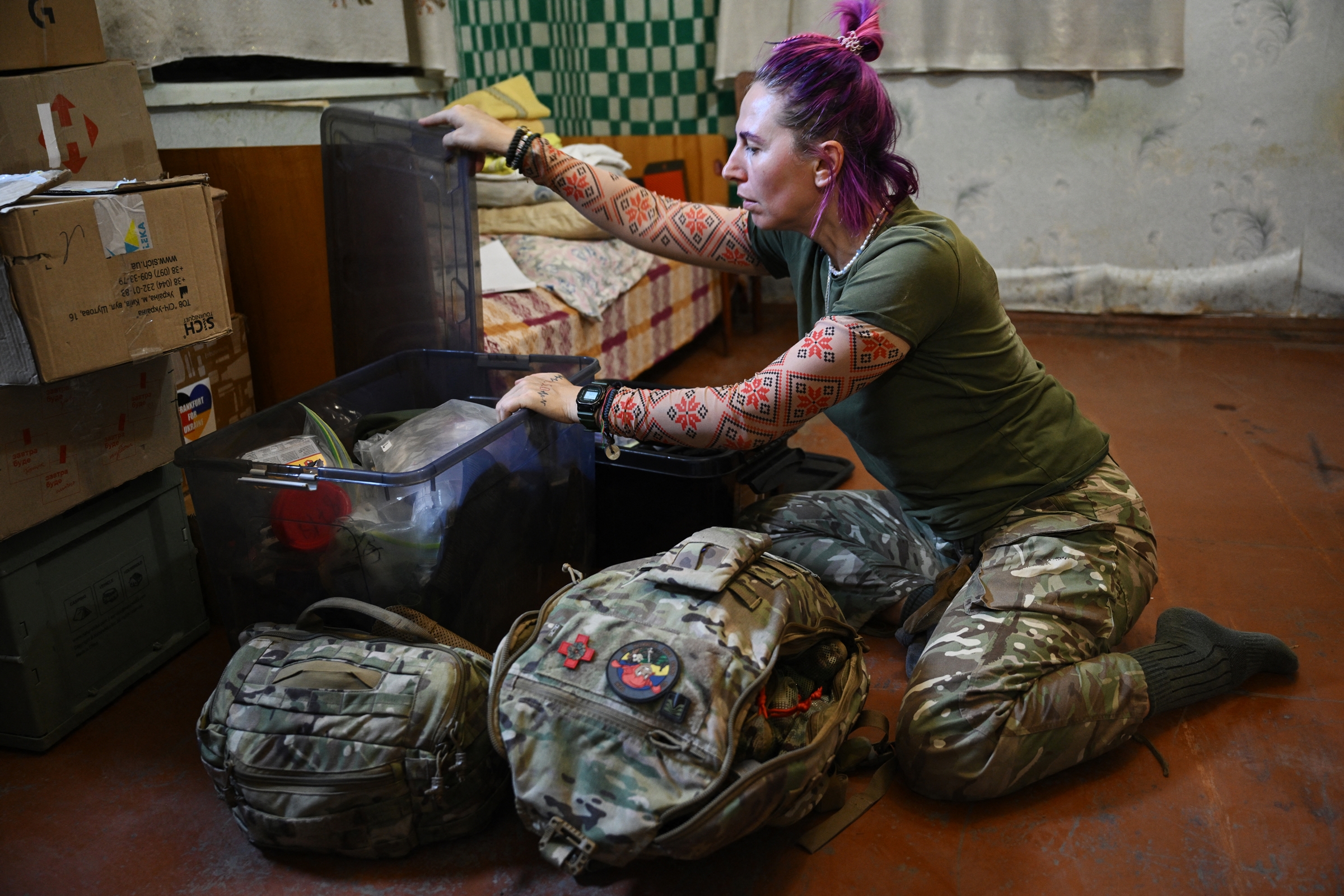 |
Olena Ivanenko checks equipment at a base in eastern Ukraine on 6/8. Photo: AFP |
Olena Ivanenko checks equipment at a base in eastern Ukraine on 6/8. Photo: AFP
This sense of helplessness has forced Ukrainian medical personnel to become more resourceful. Ivanenko says her unit often uses drones to send food and medicine to trapped soldiers, even sending syringes and remote injection instructions.
Robots like Magician's, used to evacuate the wounded, are one solution, but only those skilled in the technology can perform this complex task.
"You have to be very careful, no sudden movements," when transporting a wounded soldier, said Krop, a robot operator with the 5th Brigade.
At a training ground in eastern Ukraine, he adjusted the robot's course via a handheld controller with a screen. Krop maneuvered the robot through a sunflower field and spun it in place while a comrade secured a stretcher for loading the wounded.
They exercise extreme caution during missions, according to Bop, a soldier in the 5th Brigade. "It's someone's life," the 24-year-old soldier said. "This is not a toy, and the mission is not a game. We don't joke around."
These robots are slow-moving and vulnerable to detection and attack by Russian drones, as well as the ever-present danger of landmines. The weight of failure rests heavily on the operators, leading to self-blame.
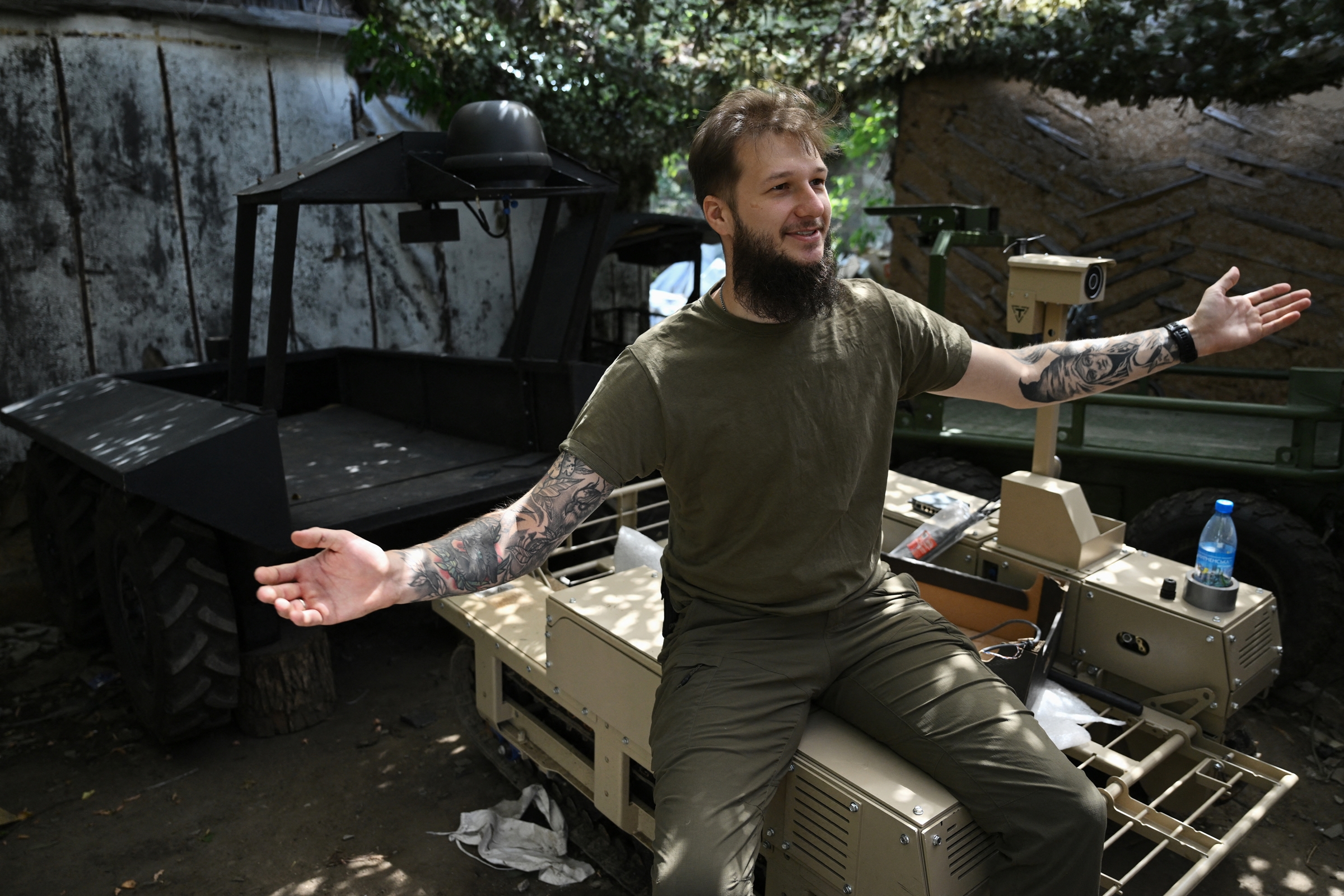 |
Magician talks about his rescue work while sitting on a wounded transport device at a base in eastern Ukraine on 13/8. Photo: AFP |
Magician talks about his rescue work while sitting on a wounded transport device at a base in eastern Ukraine on 13/8. Photo: AFP
Magician thought it was over when his robot hit a mine while evacuating a wounded soldier. But 5 minutes later, he discovered the soldier was still alive, though thrown from the vehicle, and crawling to safety.
He immediately dispatched another robot to reach the soldier. "My whole body was shaking, except for my fingers on the controls," Magician said.
The return journey took hours, punctuated by the wounded soldier's cries of pain as the robot navigated slopes and potholes.
"I felt for him. Traveling 15 km in a shaking basket on a robot isn't comfortable," Magician said. "But I got him out."
Hong Hanh (AFP)



